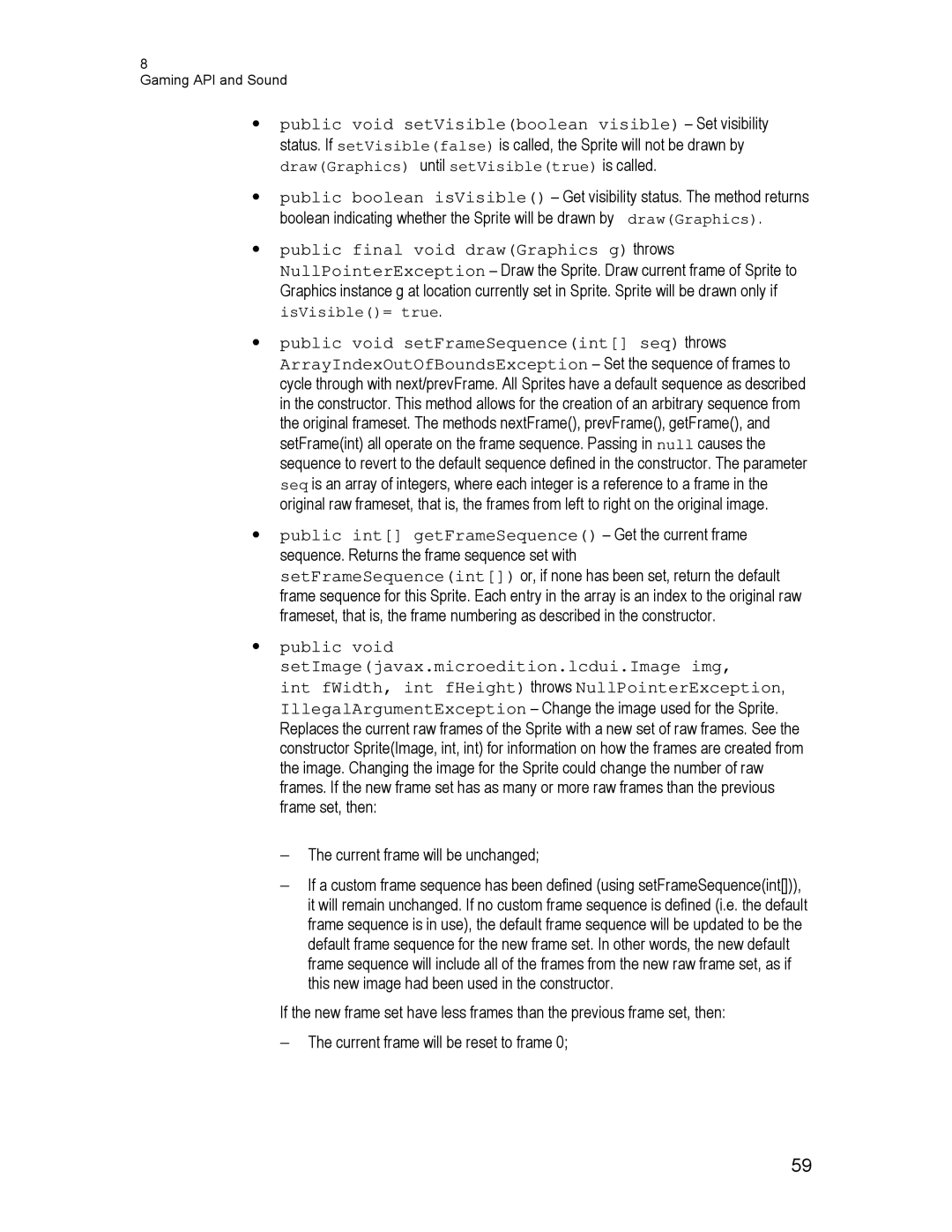8
Gaming API and Sound
•public void setVisible(boolean visible) – Set visibility status. If setVisible(false) is called, the Sprite will not be drawn by draw(Graphics) until setVisible(true) is called.
•public boolean isVisible() – Get visibility status. The method returns
boolean indicating whether the Sprite will be drawn by draw(Graphics).
•public final void draw(Graphics g) throws
NullPointerException – Draw the Sprite. Draw current frame of Sprite to Graphics instance g at location currently set in Sprite. Sprite will be drawn only if isVisible()= true.
•public void setFrameSequence(int[] seq) throws ArrayIndexOutOfBoundsException – Set the sequence of frames to cycle through with next/prevFrame. All Sprites have a default sequence as described in the constructor. This method allows for the creation of an arbitrary sequence from the original frameset. The methods nextFrame(), prevFrame(), getFrame(), and setFrame(int) all operate on the frame sequence. Passing in null causes the sequence to revert to the default sequence defined in the constructor. The parameter seq is an array of integers, where each integer is a reference to a frame in the original raw frameset, that is, the frames from left to right on the original image.
•public int[] getFrameSequence() – Get the current frame sequence. Returns the frame sequence set with setFrameSequence(int[]) or, if none has been set, return the default frame sequence for this Sprite. Each entry in the array is an index to the original raw frameset, that is, the frame numbering as described in the constructor.
•public void
setImage(javax.microedition.lcdui.Image img,
int fWidth, int fHeight) throws NullPointerException,
IllegalArgumentException – Change the image used for the Sprite. Replaces the current raw frames of the Sprite with a new set of raw frames. See the constructor Sprite(Image, int, int) for information on how the frames are created from the image. Changing the image for the Sprite could change the number of raw frames. If the new frame set has as many or more raw frames than the previous frame set, then:
−The current frame will be unchanged;
−If a custom frame sequence has been defined (using setFrameSequence(int[])), it will remain unchanged. If no custom frame sequence is defined (i.e. the default frame sequence is in use), the default frame sequence will be updated to be the default frame sequence for the new frame set. In other words, the new default frame sequence will include all of the frames from the new raw frame set, as if this new image had been used in the constructor.
If the new frame set have less frames than the previous frame set, then:
−The current frame will be reset to frame 0;
59
